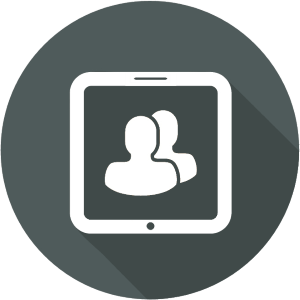The concept of “Digital Transformation” has been gaining steam in the business world over the last few years, as the benefits of facilitating digital business communication within large organizations are abundantly clear. However, in the world of governance, the move towards digital engagement for the purpose of civic innovation has been much more gradual. Now it looks like things might be starting to change.
We are finally seeing some signs of acceleration towards a digital democracy, with White House-sponsored Smart cities initiatives, government-run social media accounts, and more. Coined Democracy 2.0, the concept of utilizing digital transformation platforms, as well as citizen engagement software, is one that is being greeted joyously by the public in general. However, actually engaging citizens with these initiatives has been another challenge altogether. This blog will look at the limitations of the current initiatives and platforms, and discuss potential solutions to this crucial issue.
Listen to the People
With a growing focus on citizen participation, even government agencies are jumping on the communication bandwagon. Facebook, Twitter, and other social media accounts in the name of local and state offices are a testament to the fact that the world is realizing the need for more communication. However, chatting over social media isn’t enough, citizens expect to see clear indications that their suggestions and comments are receiving attention and aren’t just being dismissed with kind words (“Thank you for your input!”). When engaging citizens, it’s important to show clear intention to implement the suggested ideas, with a clear indication, in the form of budget and resources allocation, that this process will actually take place. The citizens will see this and reciprocate, becoming more active. This leads to greater citizen engagement which ensures that more citizens are brought into the actual decision-making process, so governments can respond to the community needs more readily.
From solidarity groups intervening with the provisions of public goods to community participation to reduce corruption, governments around the world are including citizen engagement as a key component to their policies and action plans. These initiatives, while noble in theory, are not without their issues. Some of the challenges include:
✔ Abuse of power
✔ Lack of consensus
✔ A standstill in the decision-making process
And the issues only grow when the aspect of technology – a necessary component – is added to the mix.
The Challenges of Technology
Providing a quality citizen experience is key to any successful citizen engagement program.
Technology must be a tool used by citizens to make their lives better. Good digital transformation solutions are designed to focus teams on the citizen experience in using the technologies to solve their problems or complete their tasks. Unfortunately, lack of experience/knowledge of the technology and tools available, misguided approaches to dealing with the problems, complexity of citizen engagement hubs, and a lack of coordination among various channels all combine to create major gaps and inconsistent UX.
In addition to the technical hurdles involved, governments face several problems in functionality when attempting to provide a quality citizen experience. Since a multi-tiered system is required when engaging such a vast audience, the various tiers need to be broken down into individual branches that are readily recognizable as relevant to a particular citizen, community, city, and country according to the tier. All this must be organized and contained within a single platform. Along with proper hierarchy and arrangement, the system must be able to properly evaluate the inputted data. Some essential tools include crowd-voting, recognized influencers, and moderators to keep the issues flowing in a productive direction.

Citizen Engagement and
Sustain Productive
Innovation for Government Projects!
Solutions
Government CIOs should use citizen engagement software to create a hub that will capture, measure, and improve the experience in all user interactions. They must be easy to access, have a far reach, and have a way to automate the system for collecting, measuring, and responding to the data.
To be clear, this is not a simple solution, but by taking the proper steps, government agencies can overcome these challenges. Those steps include:
- Begin with a plan – Realize the needs/pain points/issues involved. Define objectives. Create a budget. Outline goals and path to get there, bridging the gap between objectives and the challenges that stand in the way of achieving those goals. The best way to accomplish this step is to involve CX leaders who have experience in the field, with the technology, and as insiders themselves.
- Set the groundwork for change – Such a massive digital transformation cannot occur overnight. There are major structural changes that need to take place on a foundational level in order to incorporate the technologies, practices, and policies involved in creating a solid, smooth, and productive citizen engagement platform. Another level of change which needs to be addressed is creating a culture of ideation, innovation and citizen engagement. The citizen engagement team is responsible to both sides – their superiors as well as the citizens themselves, and should be clear to show that they are not merely filling out reports, but are advancing ideas to the next stage.
- Create a digital design plan – This would include plans for smoother CX, integration, personalization, and room for improvements based on social science/UX-inputted data.
- Involve the people – The voice of influencers in a social network carry weight. Involving citizens in the website life cycle provides an opportunity to cultivate a positive relationship with those influencers. It also allows agencies to glean valuable information about the UX provided, changes in societal trends, etc. Let the citizens know that not only are they able to comment, but that they are expected to comment. Communication lines are the lifeblood of an open innovation citizen engagement system such as this
Conclusion
Even more than the average digital transformation organization, governments are in need of a powerful tool that can combat the real security concerns surrounding this innovative step towards a more collaborative future. Qmarkets’ Q-city, dedicated innovation management software, is designed for this exact purpose and can answer all of the above needs. Combining an intuitive, collaborative, and user-friendly platform, Qmarkets flexibly and intelligently adapts, assesses aggregates, assimilates, and arranges all the data into condensed, usable, and actionable bits of information that can be utilized for maximum effect.
If you are interested in discovering how you can leverage citizen engagement software, or want to learn more about harnessing the wisdom of the crowd for your enterprise, don’ t hesitate to contact us today.



